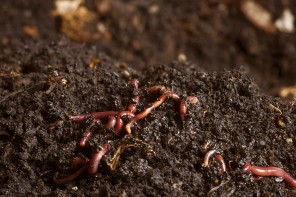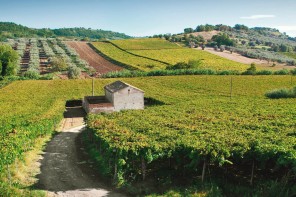It may surprise you to learn that your average soil (the kind that’s perfect for the bounty of veggies that you hoped to grow this past Summer) is probably not a place where you could plant a grape vine. It goes against logic, to a certain extent. Isn’t a beautiful, rich, fertile plot of earth perfect for creating any kind of plant life? Dirt, sun and water means you’re good to go, right?
Not quite. The world of soil types and the wines that grow out of them is vast and complicated. Sommeliers sometimes get uber-nerdy about the whole soil thing, and unless you’re ready to nerd out with them, it can get weird real fast. Wine people can’t help it, because- true story- soil is completely fascinating, right down to the actual textural sensation that occurs on your tastebuds when you taste a wine. Little details like that can have everything to do with dirt.
In the whole wide world of wine and wine regions, there are several types of soil that are considered the most optimal for grape-growing. When combined with the right elevation, sun exposure and a variety of other influences, these are the cat’s pajamas. Most soil types are place-specific, making the concept of terroir even more layered. In a very poetic way, wine is truly a one-of-a-kind expression of exactly where it came from, right down to the minerals found in the soil, which is why this stuff matters.
Here’s a quick rundown of some of the most famous soil types in the wine world:
Volcanic
Where to find it: Sicily’s Mt. Etna, parts of the Napa Valley, parts of the Willamette Valley, Santorini.
Why it’s special: Volcanic soil, you might have guessed, results from a long-ago volcanic eruption. Volcanic soil is rich in specific minerals: iron, potassium, magnesium and calcium. This allows for excellent water drainage so the grapevines don’t get “wet feet”. Wines grown in this soil type generally exhibit extra-pronounced aromatics. They have a bright, fresh quality that really captivates.
Grapes that dig it: Nerello Moscalese, Chardonnay, Assyrtiko, Cabernet Sauvignon
Limestone
Where to find it: Champagne, Burgundy, the Loire Valley, England.
Why it’s special: If there were to be a “most famous” soil type, it would probably be limestone. There is a trail of limestone that runs from England all the way down through many famous French wine regions. This soil type contains a high percentage of calcium carbonate, the main component of limestone (hello, high school science). This chemical compound allows for easy absorption of minerals, which make happy and delicious grapes. Limestone soil also retains moisture very well, helping the vines withstand periods of drought. When you taste a wine grown in limestone soil, it will often sear across your tastebuds with tingly minerality and high acid- a delightful experience.
Grapes that dig it: Chardonnay, Pinot Noir, Sauvignon Blanc, Chenin Blanc
Clay
Where to find it: Bordeaux’s Pomerol, Spain’s Rioja & Ribera del Duero, Australia’s Barossa Valley
Why it’s special: Clay soil manages to stay cooler than other soils, which works out well for extremely hot regions like the Barossa Valley. They are said to produce exceptionally bold, burly and concentrated wines. There are almost endless combinations of clay-based soils; some are rich with limestone, known as calcareous clay. The Barossa Valley’s soil is considered clay-loam: a mix of clay, sand and silt.
Grapes that dig it: Shiraz, Tempranillo, Merlot, Cabernet Franc
Sand
Where to find it: Italy’s Barolo, South Africa’s Swartland, Bordeaux’s Médoc & Graves, parts of California
Why it’s special: Why “swipe right” on sandy soils? They’re resistant to that nasty louse, Phylloxera, which will slowly strangle the life from a grapevine. Because of that, areas with sandy soil have extremely old vines, giving them major bragging rights. A wine grown in sandy soil is often soft, with light color and low tannin. Sandy soil retains heat well, and in a cooler climate will result in soaring aromatics in the finished wine.
Grapes that dig it: Cabernet Sauvignon, Nebbiolo, Zinfandel.
When it comes to soil, resist the urge to get overwhelmed and call upon your inner Greek philosopher: “All I know is that I know nothing.” For every detail you learn about soil types, there’s about 100 more behind it. But the next time you really love a wine, do a quick search to see what kind of soil it comes from. See if you notice any patterns in your taste, and have a little fun with it!









It’s interesting to read about all the different benefits of different types of soil. I like the idea of using a sand soil for the grapes as the benefits it provides seem very appealing. I’ll have to keep this in mind when updating my garden.